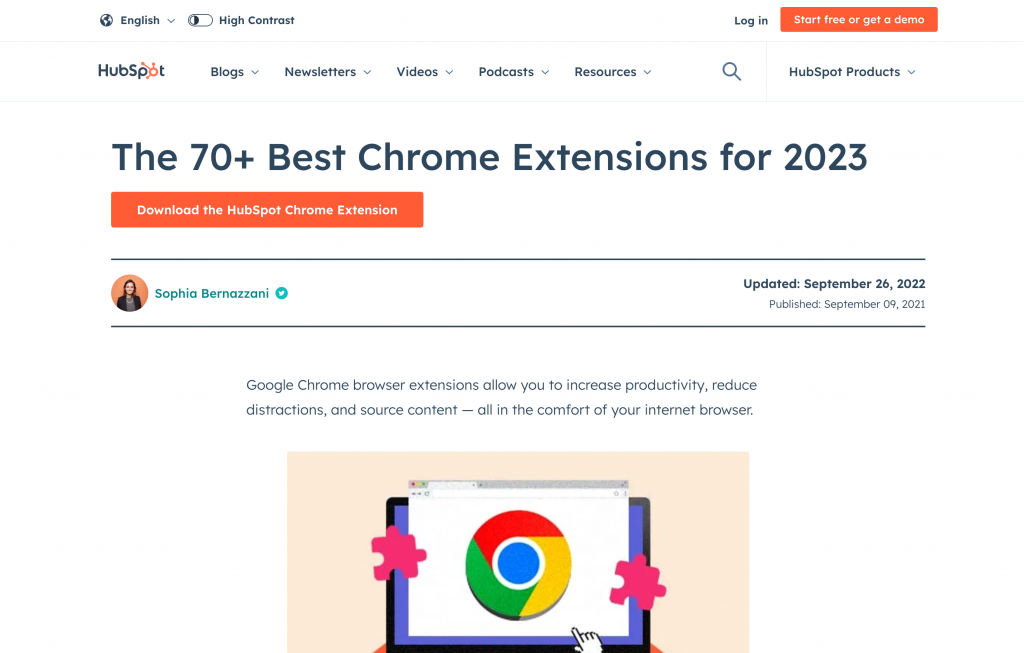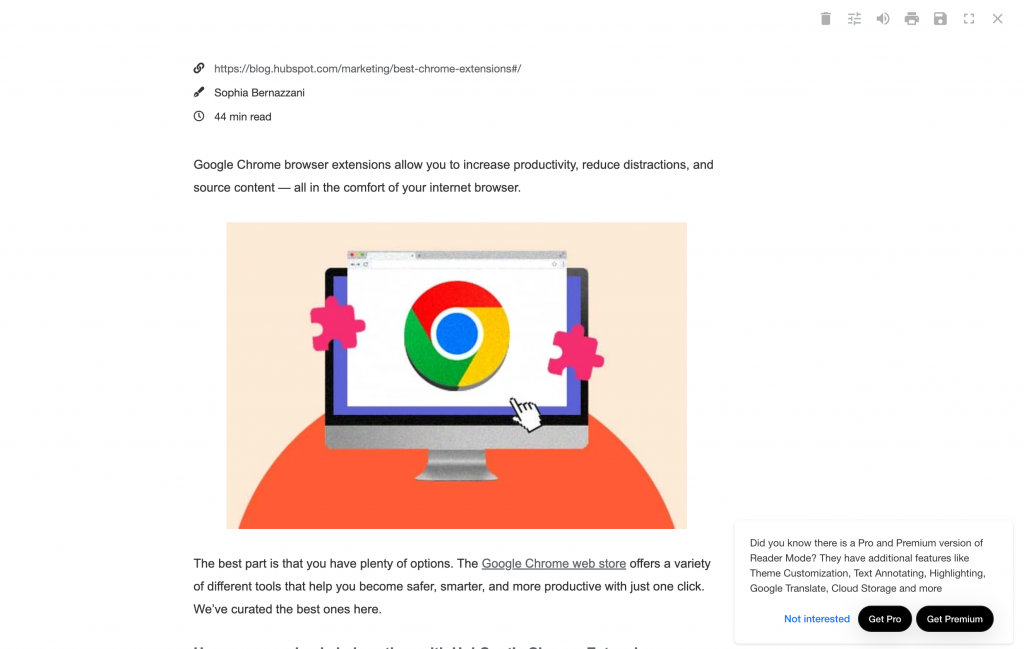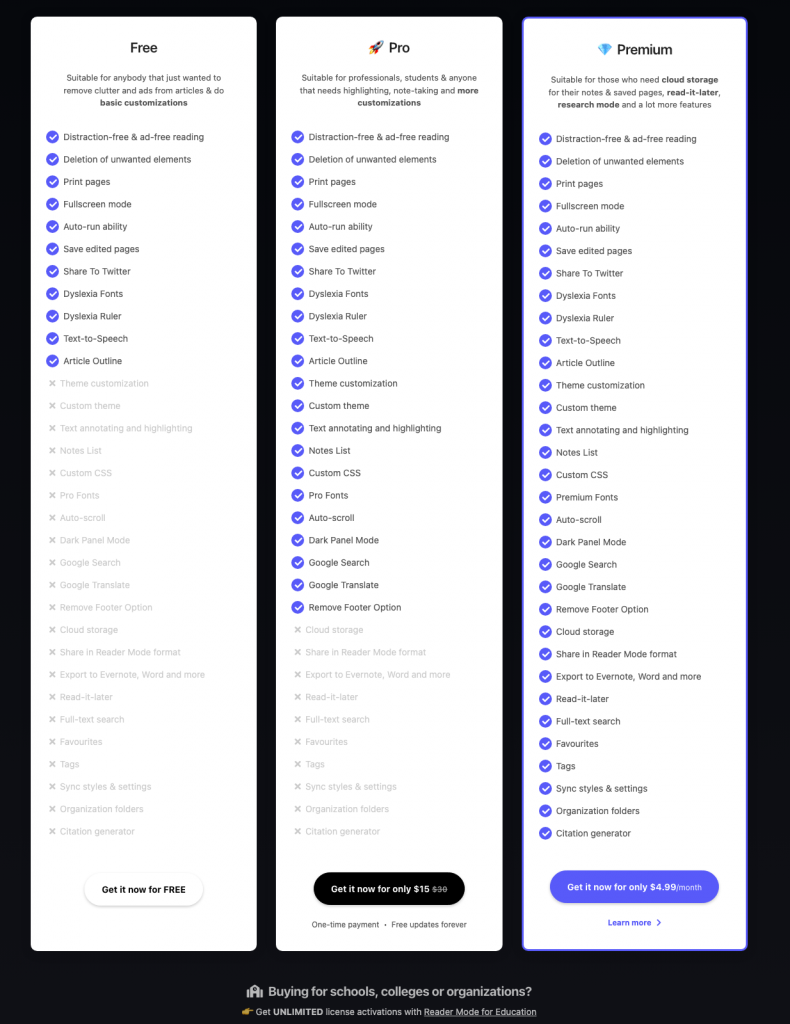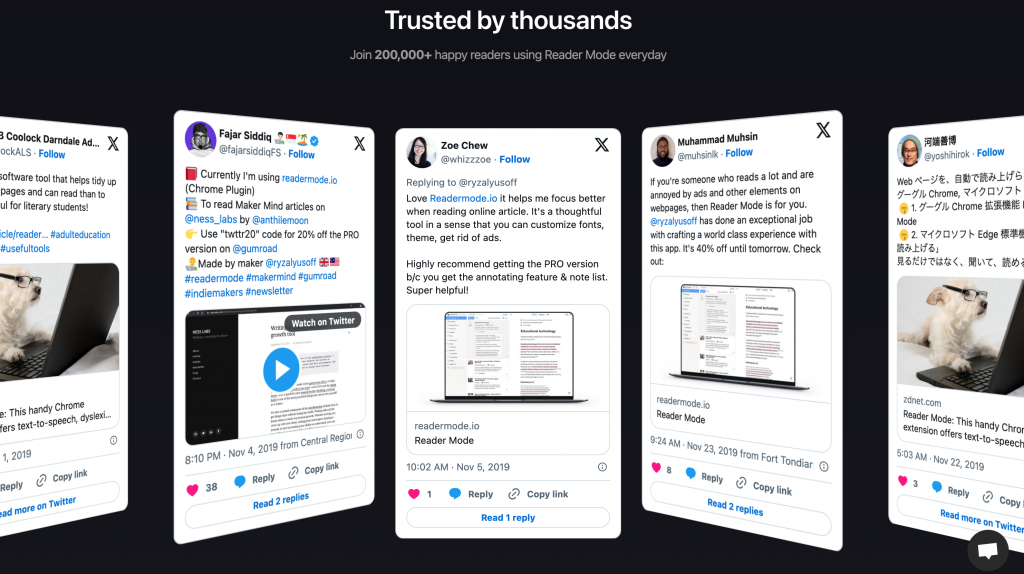An individual, working in their spare time, developed a browser extension. In the first year alone, they achieved an income of $10,000, and by the second year, their accumulated income exceeded $40,000. Today, we are sharing the story of an independent solo developer, Ryzal, and their extension "ReaderMode." This extension has garnered over 200,000 users and consistently brings in substantial revenue for the developer.

From 0 to 1 in just one weekend
The development of ReaderMode was driven by the idea of offering users a distraction-free and immersive reading experience. Ryzal spent a single weekend to launch the MVP (Minimum Viable Product) version, allowing users to use basic features for free and offering advanced features for a fee. This freemium business model is already quite mainstream abroad, with examples like Notion, Slack, and Dropbox using similar approaches.
In the span of just one weekend, he completed the MVP version and shared it with a few friends and groups to collect feedback and suggestions. The unexpected outcome was that some individuals immediately paid for the pro version.
original page:

The page after enabling the extension:

Are people willing to pay for browser extensions?!
ReaderMode adopts the freemium business model, offering basic functionalities for free and providing advanced features under a paid subscription. This business model has gained widespread popularity abroad, as seen with platforms like Notion, Slack, and Dropbox.
This model carries several advantages: users can explore basic features without any upfront payment, thereby reducing psychological barriers to entry. As a result, users driven by curiosity might be more inclined to give it a try (since it's free anyway). Additionally, if the free features of the product are compelling, they can attract a group of loyal users. These users often help spread the word and recommend the product to more potential users, which is Word of Mouth (WoM) marketing. While WoM might not be the fastest method of propagation, it is one of the most efficient conversion techniques.
With an expanding user base, paying users naturally emerge. Through this approach, ReaderMode achieved rapid growth in a short period and became a highly regarded and popular browser extension.

It can be said that free users under the freemium model serve as powerful marketing tools. From a financial perspective, you can view the investment (time, effort, money, etc.) in the free version as a form of marketing expenditure.
Starting from scratch, reaching $20,00 in revenue
For individual independent developers, development is often not the hardest part; it's the promotion that's the real challenge. In many cases, it's not that the product can't be created, but rather how to sell it once it's built.
A tweet from the developer themselves:

Before the official launch, the developer undertook some crucial tasks. They utilized their personal channels and social media groups for small-scale promotion, a strategy commonly employed by independent developers abroad. This approach serves multiple purposes:
- Secondary validation of demand.
- Gaining more followers.
- Stress-testing.
- Identifying potential issues.
- Building anticipation for the official launch.
Once Ryzal had everything prepared, they officially launched on ProductHunt, where the product smoothly became the most upvoted product of the day.
Even luckier, apart from the promotion by ProductHunt's founder Ryan (a prominent figure on Twitter), renowned media outlets like LifeHacker noticed the product and covered it. This indicates that the quality and appeal of the product received broad recognition, bringing in more attention and users.
In a mere 24 hours, the product generated $2000 in revenue, a feat achieved less than two months after writing the first line of code.
From launch to gathering 5000 users, the process took just two weeks and didn't cost a dime. Through a successful ProductHunt launch, the product gained exposure from nearly 10 media outlets, further enhancing its credibility and visibility. Three months later, it successfully attracted 10,000 users. Overall, this success story underscores the importance of product quality and the potency of word-of-mouth marketing.
ProductHunt is a widely recognized platform for discovering new products. Users can find various fresh, fun, and useful products on this platform, and they can also submit new products for others to explore. This kind of platform provides independent designers and developers with an opportunity to showcase their work while offering users a channel to discover high-quality products.
For startup products, how to release and promote products on ProductHunt is of paramount importance. Managing the rhythm and details of the release directly impact product exposure and user conversion rates. If you can smoothly pass ProductHunt's review and achieve a high rating, you can swiftly attract a significant amount of user attention and trials, resulting in substantial free PR traffic.
If you're interested, a dedicated article on ProductHunt will be brought to you in the future.

Pay attention to the Browser Extension Market
In the beginning, programmer Ryzal from Malaysia was contemplating creating a small product to earn some extra income. Based on his daily observations, he realized that browser extensions could be a low-cost and rapid way to validate ideas. So, he decided to dive into the world of browser extensions. After researching various extensions and considering his own dissatisfaction with ads and cluttered layouts while browsing the web, he came up with the idea of a plugin that would offer users an undistracted, immersive reading experience. He believed this concept would resonate well with users.
With this simple idea as a starting point, Ryzal managed to generate a substantial income. Monetizing browser extensions isn't as challenging as one might think. Apart from the domestic market, there's a vast overseas market to explore as well. If you're interested, I hope you'll share more, and we'll bring you more insights in this area in the future."